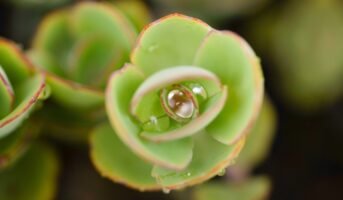A type of flowering plant belonging to the Acanthaceae family, Ruellia tuberosa is also known as minnieroot, fever root, snapdragon root, and sheep potato. Although many nations in tropical South and Southeast Asia have accepted it as a naturalised species, it’s native to Central America. Climbers are also an outdoor plants that you can grow. For more details visit this page.

Source: Pinterest
What is Ruellia tuberosa?
Ruellia tuberosa is a small biennial, flowering plant of the Acanthaceae family, which usually grows in moist and shady environments. It grows as a weed in cultivated fields, and mostly in grasslands and roadsides. The plant is also believed to have medicinal properties.
Ruellia tuberosa: Quick facts
| Botanical name: Ruellia tuberosa |
| Type: A medium sized shrub |
| Flower: Yes |
| Varieties available: Over 3 |
| Also known as: Minnieroot, fever root, snapdragon root, and sheep potato |
| Height: 2-4m tall |
| Season: Spring |
| Sun exposure: Keep in shade with a few hours of direct sunlight |
| Ideal temperature: 70 to 90 degrees Fahrenheit |
| Soil type: Well-drained |
| Soil pH: Slightly acidic to slightly alkaline |
| Basic requirements: Intermittent watering, indirect sunlight, home-made fertiliser |
| Ideal location for placement: Outdoors |
| Ideal season to grow: Spring |
| Maintenance: Low |

Source: Pinterest
Ruellia tuberosa uses
- In the past, people have used Ruellia tuberosa as a diuretic, antipyretic, analgesic, antihypertensive, anthelmintic, abortifacient, and emetic for conditions including renal disease, bronchitis, gonorrhoea, and syphilis.
- The leaves and roots are used to treat urinary retention.
- Ruellia is used in the Cayman Islands to treat cardiac conditions.
- It is used in Grenada to treat high blood pressure, fevers, and common colds.
- A component of the plant is used in a Dominican Republic drink recipe for increased male virility.
- It is used as traditional medicine in Sri Lanka to treat gastrointestinal issues.
- In India, scorpion bite wounds were treated with Ruellia leaf juice.
Also read about the medicinal uses of the Cissus quadrangularis herb
How to grow Ruellia tuberosa?
Ruellia tuberosa belongs to the Ruellia genus, a hardy perennial sub shrubs. Choose a location in your garden that receives ample sunlight. Ruellia plants can be propagated through cuttings. You can also allow it to self-seed and transplant the young seedlings.
Here’s how to grow the plant from cuttings:
Clean and sanitize the pruning. This can be done by sterilizing the blade. It helps in preventing spreading disease or bacteria. Now, cut up to four to six from the end of the stem. Take one tip for each plant you wish to propagate. Cut below a node, a small swelling where leaf or stem touches the stem. This should have a growth bud on the tip. Choose a healthy stem. Remove the lower leaves, any buds or flowers.
Now, set the pot or the planting medium. Fill up a four-inch pot with a mix of perlite and peat moss. Moisten the mixture. You can use rooting hormone and dip the cut end of each stem into it. Rooting hormone help stimulate stem growth. After this, place the cutting into the soil.
Ruellia tuberosa: Plant care
Care and maintenance of this plant is fairly easy. Here are a few tips to consider when growing Ruellia tuberosa at home.
Sunlight: Keep Ruellia tuberosa plant in an area with full sunlight exposure. However, Ruellia flowers can adapt to lack of sunlight. Adequate sunlight is essential for best blooms.
Soil: Choose moist and well-drained soil for the plant.
Climate: The plants thrive in warm climates. The wild varieties can survive winters. Make sure to check the upper surface of the soil, up to the first to three inches. If it is dry, the plant needs watering.
Water: The plant needs regular watering. However, the plant is known to withstand drought conditions in prepared soil.
The plant grows well, with the help of optimum temperature, humidity, and lighting conditions.
FAQs
From where did Ruellia tuberosa originate?
Even though Ruellia originally came from Central America, it has now naturalised in numerous countries in tropical South and Southeast Asia.
Does Ruellia tuberosa have any medicinal uses?
Yes, the plant has been used to treat illnesses including renal illness, bronchitis, gonorrhoea, and syphilis since ancient times.
Is Ruellia an indoor plant?
Ruellia plants can grow indoors and outdoors. However, the plant requires full sunlight to grow well.
Housing News Desk is the news desk of leading online real estate portal, Housing.com. Housing News Desk focuses on a variety of topics such as real estate laws, taxes, current news, property trends, home loans, rentals, décor, green homes, home improvement, etc. The main objective of the news desk, is to cover the real estate sector from the perspective of providing information that is useful to the end-user.
Facebook: https://www.facebook.com/housing.com/
Twitter: https://twitter.com/Housing
Email: [email protected]











